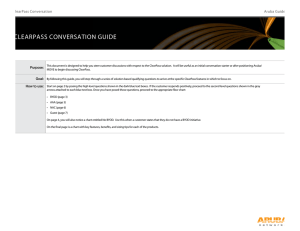

Let’s now see a slightly different topology with using port forwarding: The NAT table above shows that the Global IP 50.50.50.1 port 80 is mapped (translated) to Inside local 192.168.1.10:80.Īlso, the table above shows that an Internet host (60.60.60.2) shown as Outside global has already accessed the Web server and created a NAT entry in the table.
#ARUBA BLUECROSS CISCO VPN SETUP PRO#
Pro Inside global Inside local Outside local Outside global Let’s verify the port forwarding by observing the nat translations table: So, from the configuration example above, the global-ip (WAN IP) 50.50.50.1 and port 80 will be translated to local-ip 192.168.1.10 port 80. Ip nat inside source static local-ip local-port global-ip global-port The command which configures port forwarding has the following format: R1(config)#ip nat inside source list 1 interface GigabitEthernet0/0 overload <– Configure PAT (NAT overload) R1(config-if)#ip nat inside <– Configure the LAN as NAT inside interface R1(config-if)#ip nat outside <– Configure the WAN as NAT outside interface Port Forwarding Configuration 1Įnter configuration commands, one per line. This means that incoming traffic hitting 50.50.50.1 at port 80 will be translated to destination IP 192.168.1.10 at port 80 (which is the Web Server address).

Port Forwarding is based on static NAT whereby the public IP address assigned to the outside WAN interface of the router is translated to an internal private IP address and port assigned to an internal server. Port Forwarding is a feature that can be used to provide access from the Internet to internal servers in a Local Network. This option is good in low-budget networks, in remote offices, or in SMB networks that don’t have high requirements in terms of security etc.
#ARUBA BLUECROSS CISCO VPN SETUP HOW TO#
In this article however we will discuss and explain how to achieve the above requirement using port forwarding with a Cisco router.

In most network designs, you will see that the usual and “proper” way to protect publicly accessible servers is to place them behind a network firewall such as Cisco ASA, Fortigate, Checkpoint, Palo Alto etc. Imagine the following situation: You are a network engineer and your boss or a customer wants you to build a cheap and easy solution to host a publicly accessible server (such as Webserver, Email server, VPN server etc) using only a regular Cisco router.


 0 kommentar(er)
0 kommentar(er)
